Guide to the Calmest Small Dog Breeds

Small dogs have earned themselves a reputation for being rambunctious and a little bit of a handful. However, this personality trait is not the same among all small dogs, and there are several breeds out there that tend to have calmer demeanors.
If you are looking for a small dog but want to avoid high-energy and stress-prone breeds, you’re in luck. We’ve put together a guide to the calmest small dog breeds, along with tips on how to train your dog to be calm and relaxed, no matter what their breed.
Top 12 Calmest Small Dog Breeds
While many small dogs can be calm depending on their personality, this list features the top 12 dog breeds who are disposed to wanting a quiet, calm style of life.
1. Pugs

A pug dog is just the right combination of playful and couch potato. These dogs love to play with and show affection to their owners, but recognize the importance of a day spent lounging around the house. Pug dogs are the perfect size to fit in an apartment or home, and their exercise needs are not very intense.
Keep in mind that pug dogs are prone to breathing issues due to their shorter faces, and they can shed a lot, so brushing is needed to keep them in top shape.
2. Cavalier King Charles Spaniel

Bred to be an affectionate companion, the Cavalier King Charles Spaniel is a small dog with a big heart. This breed loves nothing more than spending time with their owners, and they are friendly to almost every other dog or person they meet.
Cavalier King Charles Spaniels can be quite athletic and do require quite a bit of exercise. They love to chase things, so a home with a large yard is a great place for this breed to be.
3. Bichon Frise
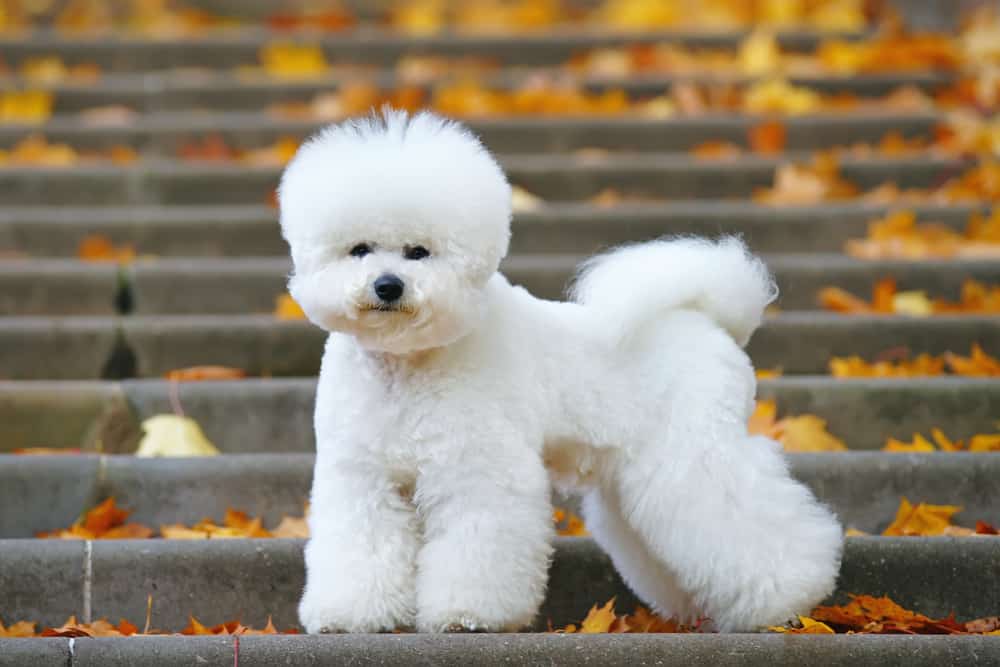
Cheerful and enthusiastic, Bichons are friendly to just about everyone and everything. While this breed can have sudden bursts of energy, daily walks are usually enough to keep them entertained. They are an intelligent dog and can be trained easily. Plus, their small size makes them great for apartments.
Bichons do need lots of attention and can become unhappy if left alone at home for extended hours. As long as you make sure not to leave them alone too often, Bichons make great lifelong companions.
4. French Bulldog
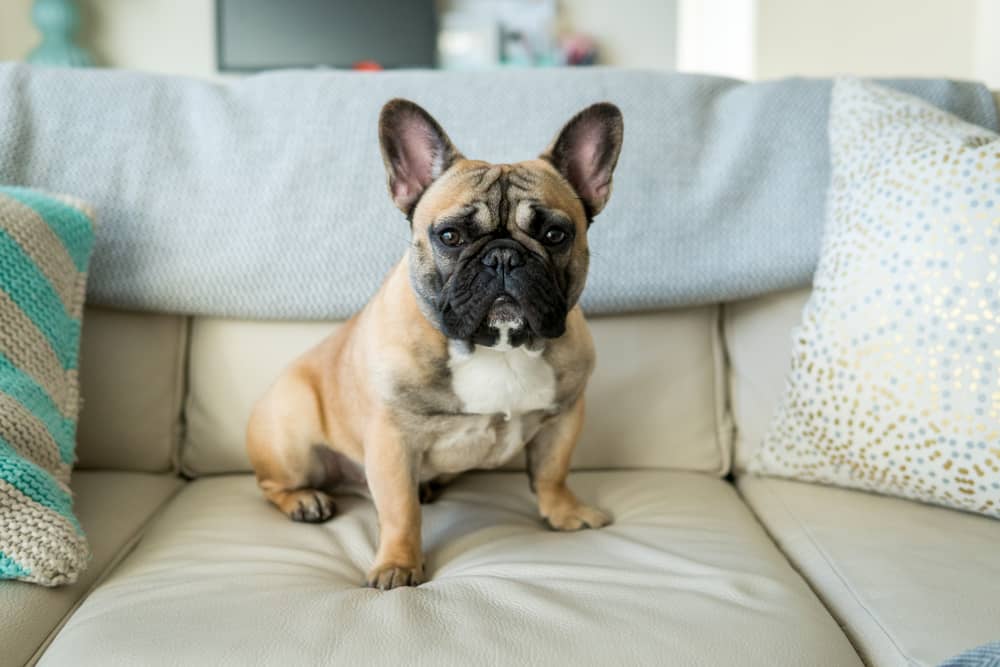
This loyal and quiet dog was originally bred to be a companion dog. French Bulldogs have a sweet temperament and enjoy spending as much time as possible with their families. They can be playful but will often opt to spend the day cuddling on the couch with their owners.
French Bulldogs can be stubborn and are known to put their paws down when asked to do something they don’t like. It can take a little bit of coaxing to properly train this dog.
5. English Toy Spaniel
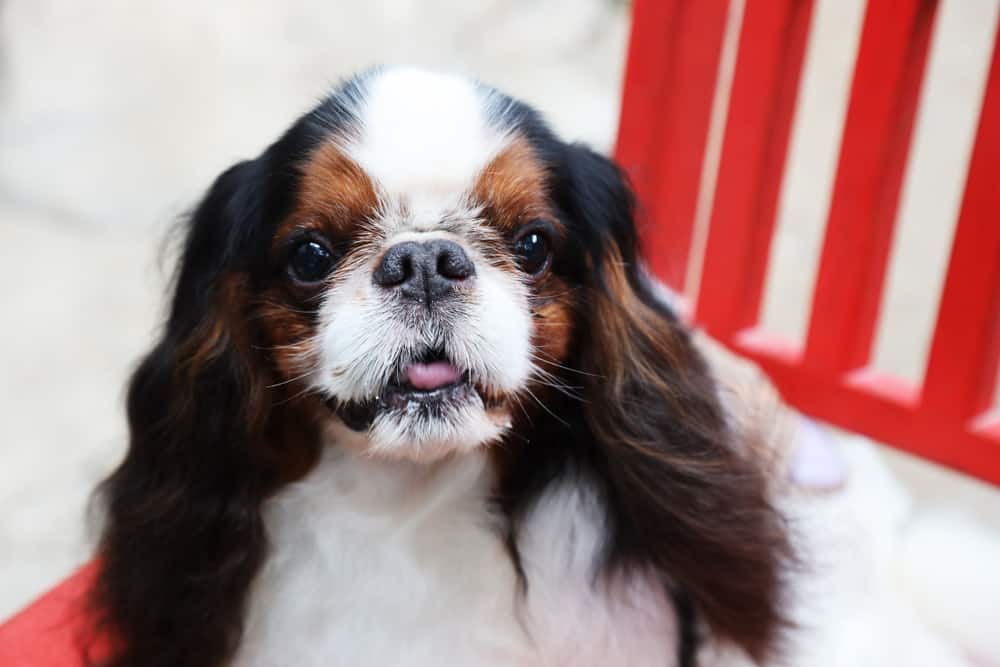
English Toy Spaniels are even more easygoing than their cousins the Cavalier King Charles Spaniel. This breed prefers life indoors, and a casual walk outdoors is typically enough exercise for them. English Toy Spaniels prefer calm and quiet, and love to spend time cuddling their owners.
Children can be a little too loud and energetic for this breed. English Toy Spaniels are best suited to an apartment or home with a quiet adult owner who will shower them with affection.
6. Maltese
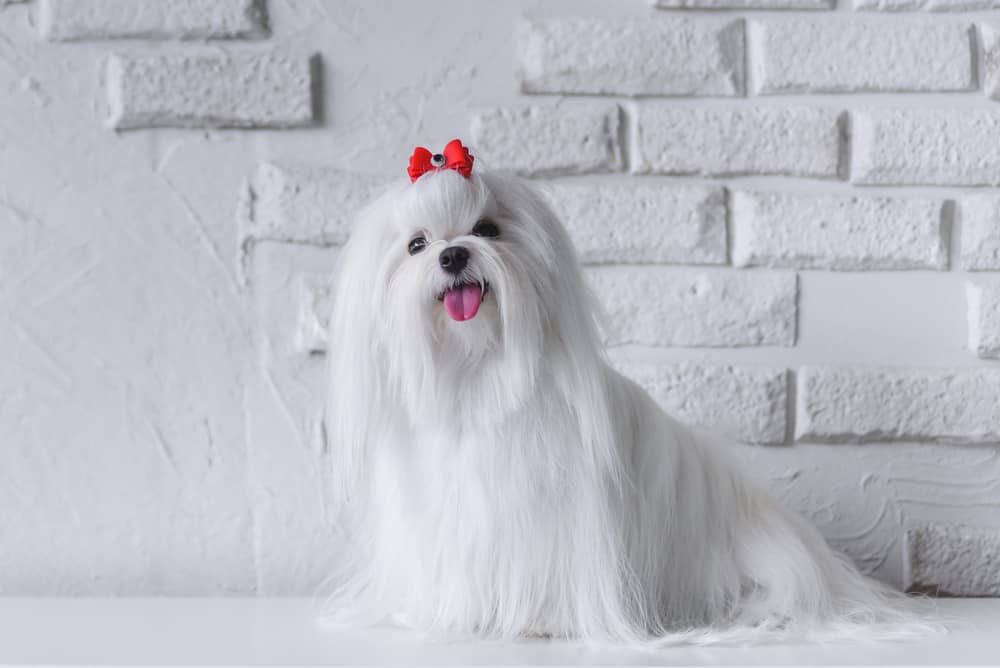
Easily cared for, the Maltese dog breed is both gentle and fearless. They make wonderful therapy dogs and enjoy being with their family all day. They don’t need much exercise to stay in shape and are fairly intelligent.
Maltese dogs typically have longer coats and can be a little difficult to groom. You may have to take your dog to a professional groomer often to keep them in shape.
7. Italian Greyhound
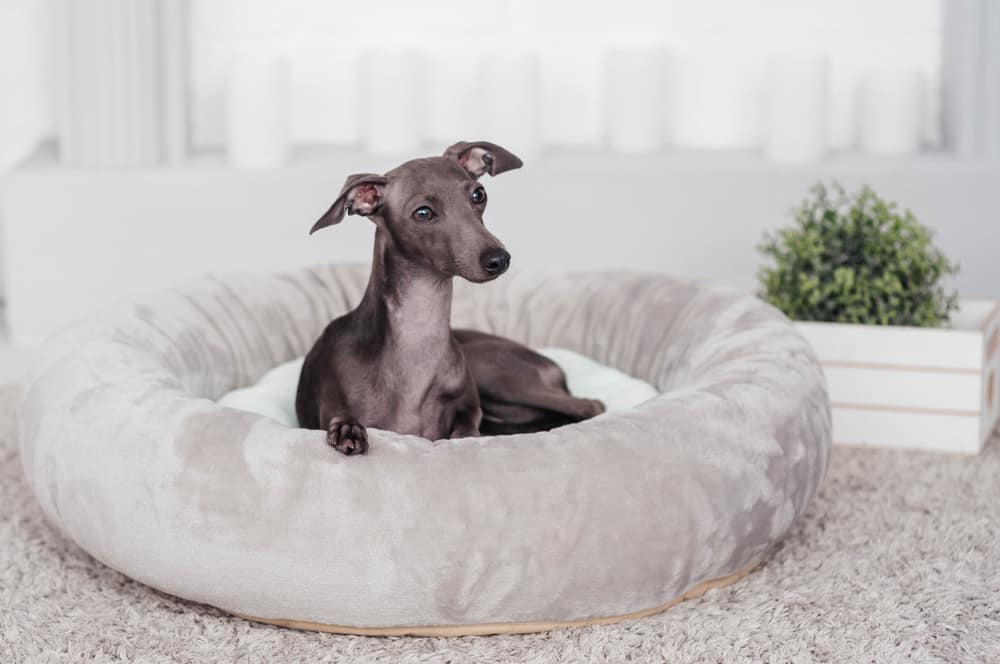
Italian Greyhounds are similar in appearance to the larger Greyhound. However, they are much smaller and very well-suited to apartment life. This breed makes a fantastic companion pet and gets along well with other animals and people.
This breed does have vigorous burst of energy and playfulness. They need a little more intense exercise than the other dogs on this list, but they will reward their owner with affection and cuddles afterwards.
8. Bolognese
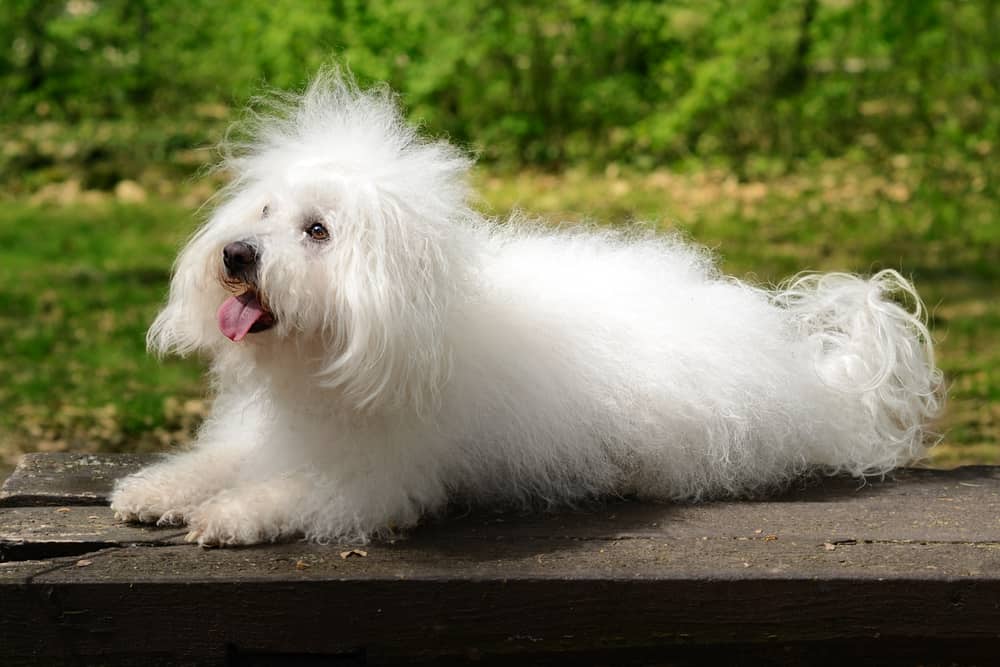
Full of personality, Bolognese dogs are sensitive and affectionate. They enjoy going on outings with their owners and tend to be friendly with strangers. Bolognese dogs adapt well to apartment living and do not have an overly high energy level.
Much like the French Bulldog, the Bolognese breed can be stubborn. Positive reinforcement is essential in training this dog.
9. Shih Tzu
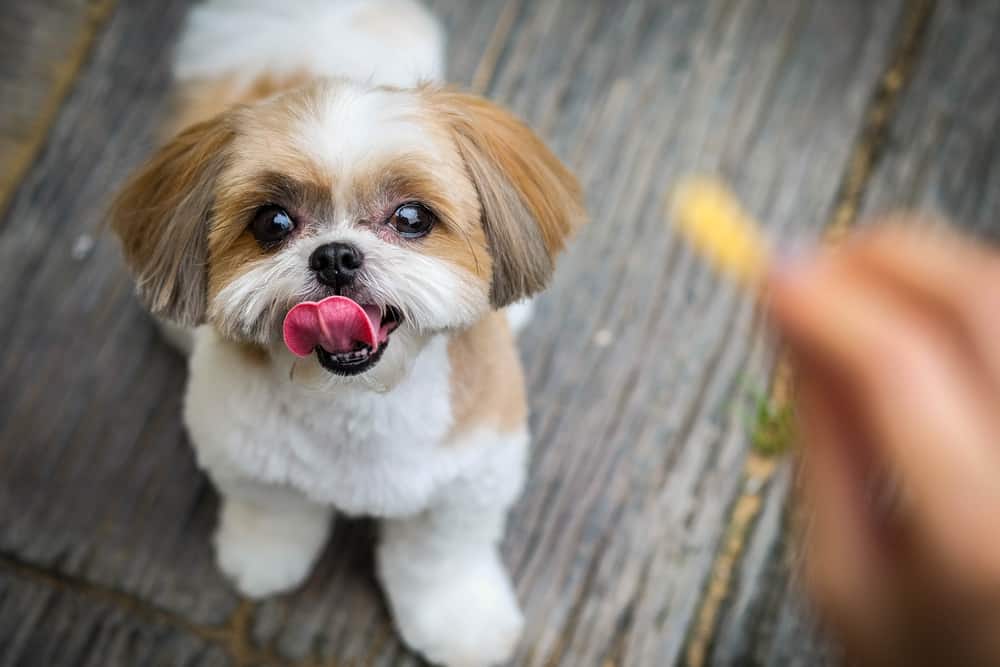
Shih Tzus are outgoing, affectionate dogs who are happy simply following their family from room to room. They enjoy sitting on laps and giving cuddles, and don’t require much outdoor exercise.
This breed is quite small and can be delicate. Children should not be allowed to play too roughly with a Shih Tzu, as it can upset or hurt the dog.
10. Pekingese
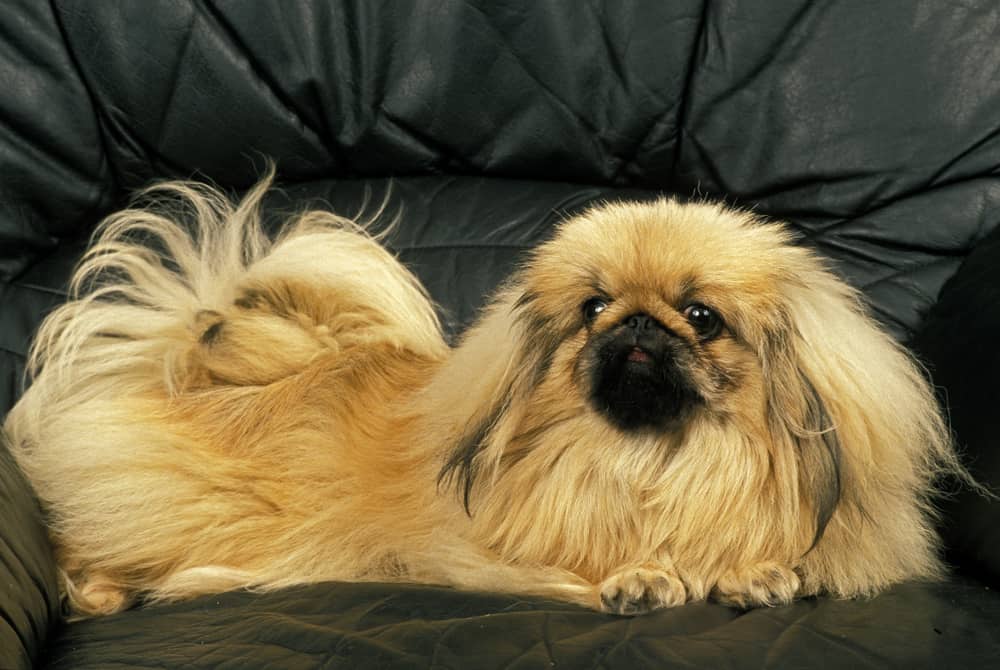
Pekingese dogs are highly adaptable and can live just about anywhere. They are dignified, gentle, and learn easily. They are best suited to homes without children due to their dainty nature.
This breed does tend to bark, but since they are easily trained, this is a problem that can be addressed. See our training tips below for more information on this.
11. Lhasa Apso

Originally bred to be guard dogs, Lhasa Apsos are short in stature and highly independent. They enjoy keeping their family company and maintaining a watch over their household. They are both intelligent and playful.
Due to this breed’s guard dog tendencies, Lhasa Apsos can be hostile towards strangers. They also need consistent training to curb any mischievousness.
12. Japanese Chin
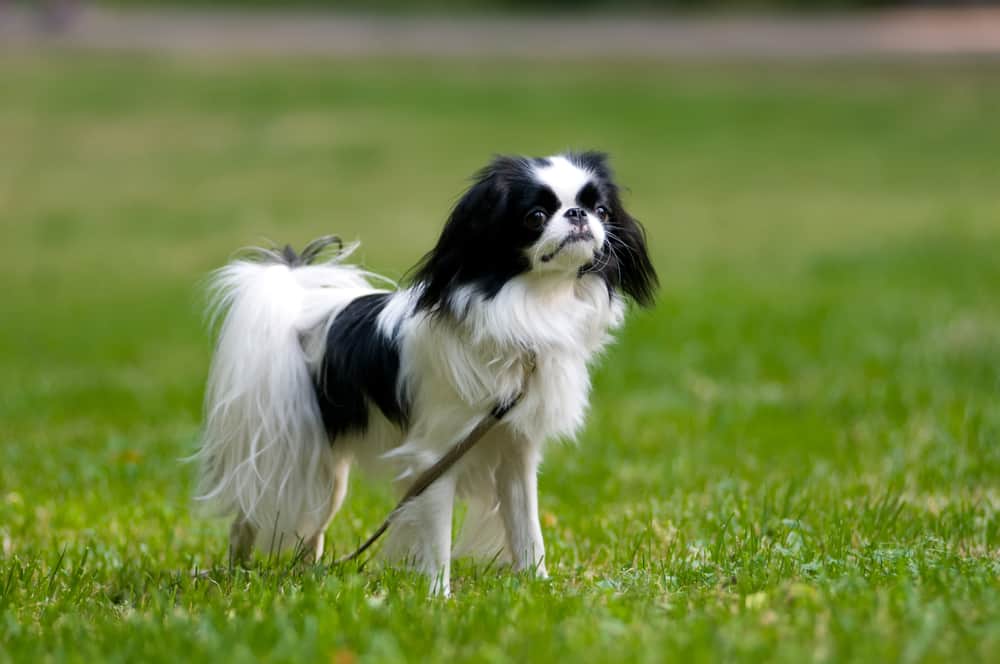
A popular member of Chinese and Japanese imperial courts, the Japanese Chin is a mild-mannered breed. They are playful and easygoing, and love to be surrounded by their family as much as possible.
Japanese Chins have a fondness for climbing, so you may be shocked to find your dog in high-up places you wouldn’t imagine. Training and designating high areas for them to reach can stop any unwanted surprises.
Training Tips to Calm Dogs
While some breeds, like the ones on this list, are predisposed to having calm demeanors, the truth is that any dog can be taught to find their Zen. Proper training is crucial for every dog, even these calm breeds, in order to ensure good behavior and a happy dog.
Learn Dog Body Language
When trying to train your dog to remain calm and less anxious, take time to notice their body language. Your dog can be sending you signs that they are uncomfortable with something or upset and you can work to remedy this. The end result is an overall more peaceful dog.
Positive Reinforcement
Whether done with special treats or extra affection, positive reinforcement is one of the best ways to get your dog to learn. With this technique, you can teach your dog a wide range of things, including basic commands and how to stop barking.
Remain Positive
Dogs can tell when their owners are getting upset with them. This, in turn, can cause the dog to become more badly-behaved as they react to their trainer’s emotions. Remain positive when teaching your dog to be calm. Avoid yelling and getting visibly frustrated as this will only delay your dog’s learning.
Provide Enough Exercise
Sometimes, bad behavior, excessive barking, and hyperactive energy can all boil down to one issue – your dog isn’t getting enough exercise. Even the laziest of dog breeds still need daily walks, and without the right amount of exercise, your dog can start to act out.
Make sure you understand your dog’s exercise needs and plan accordingly to stop any negative behaviors from developing.
Finding a Dog for Your Lifestyle
If you love small dogs and want a breed that doesn’t require massive amounts of energy to keep up with, one of these calm dog breeds from our list might be perfect for you. Just remember that with any dog you adopt, you need to put effort into training them and understanding the best way to care for them. Do this, and you will be well on your way to finding a new loyal and calm member of your family.




